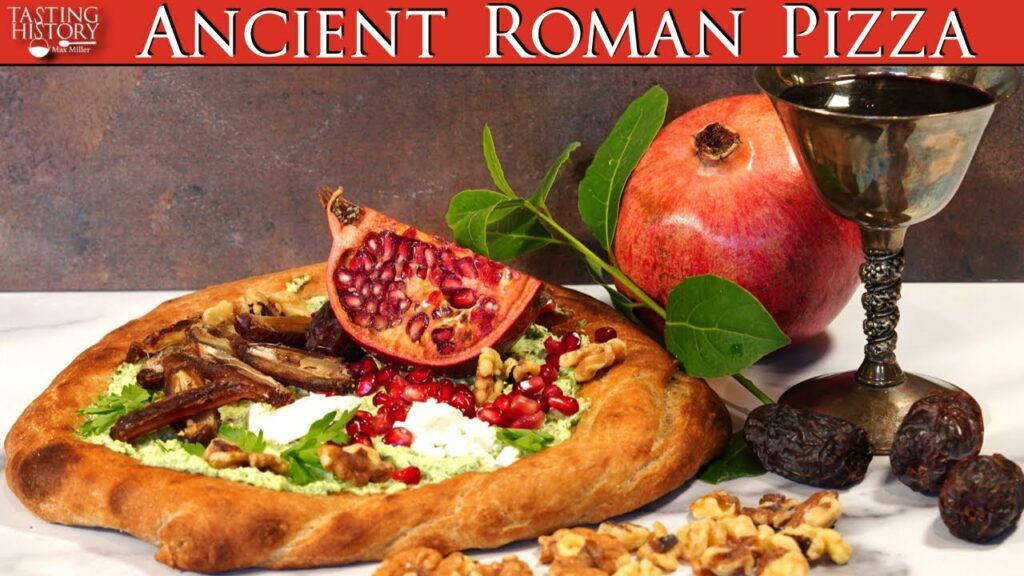Just last month, we featured here on Open Culture the discovery of a Pompeiian fresco purported to depict an ancient ancestor of pizza. For most of us pizza-loving millions — nay, billions — around the world, this was a notable curiosity but for Max Miller, it was clearly a challenge. As the creator of the hit Youtube channel Tasting History, each of whose episodes involves faithful re-creation of dishes from eras past, he couldn’t possibly have ignored this development. But it also poses even stiffer difficulties than most of his culinary projects, providing him not a recipe to work with but a picture, and not a particularly detailed picture at that.
The fresco’s genre is xenia, which, Miller explains in the video above, “comes from the Greek word that referred to a sort of social contract between hosts and guests.” The ancient Roman architect Vitruvius (he whose work inspired Leonardo’s Vitruvian Man) described how the Greeks, after becoming wealthy, “began providing dining rooms, chambers, and storerooms of provisions for their guests.”
The food and drink they brought out for their dinner parties became the subject of xenia artworks like this fresco from Pompeii, which happens to include a familiar-looking round bread. What’s more, “some scholars have suggested that one of the ingredients that probably is on this bread is sort of pizza-like, insofar as it is a kind of spreadable cheese.”
The quality of that ingredient, called moretum, seemingly makes or breaks this ancient pizza, and so Miller spends most of the video explaining its preparation, drawing details from a poem attributed to Virgil. Those following along in their own kitchens will need to gather a couple heads of garlic, large handfuls of parsley and cilantro, a small handful of rue, and ten ounces of white cheese. When you’ve made the moretum, you can bake the Roman bread, loaves of which were preserved by the explosion of Mount Vesuvius, then spread on the moretum and “top it with things like white cheese, dates, pomegranates, or whatever else you saw in the fresco.” Miller notes that actual Pompeiians probably wouldn’t have sliced the final product, but rather picked off and eaten its toppings one-by-one before getting around to the bread: a pizza consumption method practiced by more than a few of us moderns, at least in childhood.
Related content:
A Newly Discovered Fresco in Pompeii Reveals a Precursor to Pizza
Historical Italian Cooking: How to Make Ancient Roman & Medieval Italian Dishes
The First Pizza Ordered by Computer, 1974
A Culinary Videos Series Shows Every Conceivable Way to Cook Eggs, Potatoes, Pizza, Bacon & More
Based in Seoul, Colin Marshall writes and broadcasts on cities, language, and culture. His projects include the Substack newsletter Books on Cities, the book The Stateless City: a Walk through 21st-Century Los Angeles and the video series The City in Cinema. Follow him on Twitter at @colinmarshall or on Facebook.
